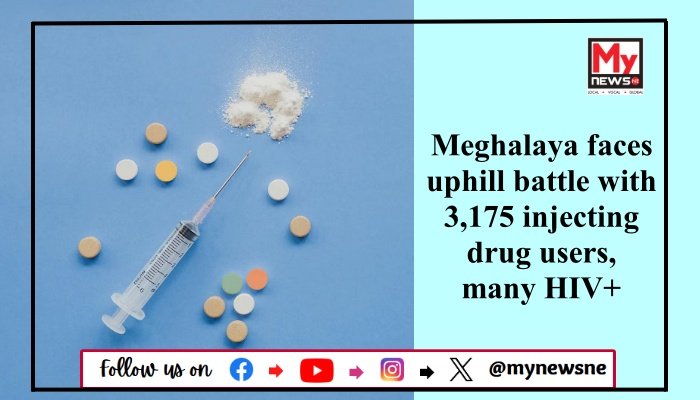Meghalaya Faces Alarming Rise in Injecting Drug Users, Many with HIV/AIDS
Northeast Desk, 30th May: Meghalaya is confronting a severe public health challenge as 3,175 injecting drug users (IDUs) have been identified across the state, with a significant number suffering from HIV/AIDS. This alarming statistic was disclosed during a recent drug reduction event in Shillong, chaired by Social Welfare Minister Paul Lyngdoh.
Principal Secretary in-charge of Health and Family Welfare, Sampath Kumar, revealed that a comprehensive programmatic mapping and population size estimation conducted between 2022 and 2023 unveiled the troubling number of IDUs. Out of these, 2,350 active users are registered with NGOs linked to the Meghalaya AIDS Control Society (MACS).
Kumar emphasized the health department’s proactive measures to curb the spread of HIV/AIDS among IDUs. He detailed the implementation of mechanisms to prevent needle sharing and the provision of opioid substitution therapy (OST) to transition users to oral intake, aiming to reduce the prevalence of drug injection.
In a strategic move to combat the drug crisis, the state government is reinforcing village defense parties (VDPs) to eradicate drugs and narcotics in Meghalaya. Minister Lyngdoh highlighted the importance of a community-driven approach, stating, “We would not like to see DREAM (Drug Reduction Elimination and Action Mission) as just a government initiative. To eliminate and eradicate the menace, we need to broaden the involvement of civil society.”
The revitalized VDPs will collaborate with the police to maintain law and order, conduct patrols, prevent crimes, and address drug-related activities. Plans are underway to engage traditional institutions, beginning with consultations in the Greater Shillong City area.
While noting the government’s support for nine de-addiction centers and related activities, Lyngdoh underscored the necessity of a united effort to effectively tackle the drug crisis. The state’s approach combines governmental initiatives with active participation from civil society, traditional institutions, and community groups to create a robust defense against drug abuse and its associated challenges.
As Meghalaya grapples with this significant public health issue, the state’s comprehensive strategy aims to mitigate the impact of drug use and HIV/AIDS, emphasizing prevention, treatment, and community involvement to foster a safer and healthier environment for all residents.
Read More: Sikkim Disaster Management Authority Issues Advisory for Teesta River Flood Risk

